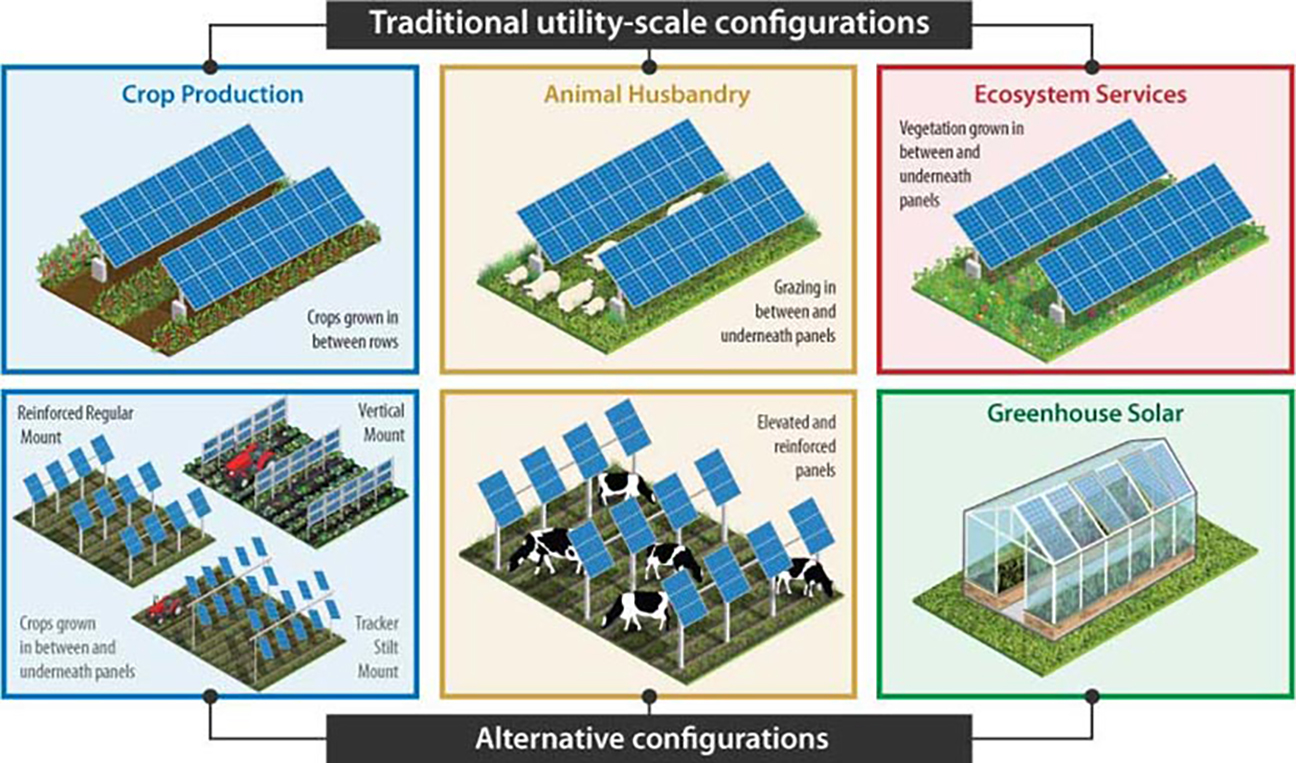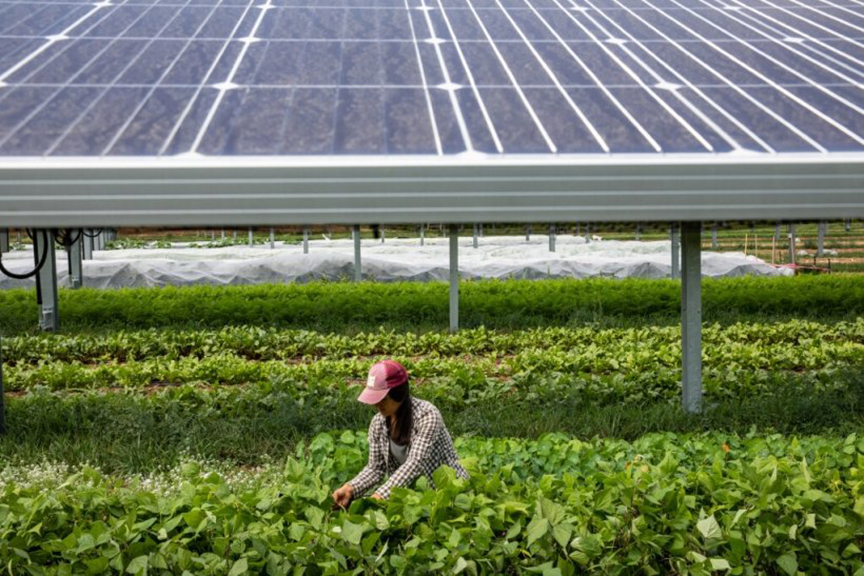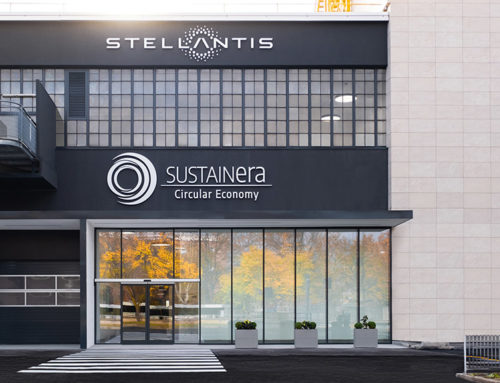In the vast expanse of the Lone Star State, where energy production reigns supreme, a groundbreaking endeavor is underway, aiming to make solar energy and agriculture not just coexist but thrive together. Researchers at Texas A&M AgriLife are at the forefront of a movement known as “agrivoltaics,” a transformative technology that holds the promise of boosting the efficiency and resilience of both sustainable food systems and energy production. As the state’s population continues to burgeon, the demand for energy is skyrocketing, putting unprecedented pressure on the electrical grid.
Texas is renowned as an energy powerhouse, thanks to its abundant reserves of fossil fuels and renewable resources. However, the state’s energy needs are expanding in tandem with its population. This year, during a scorching summer heat wave, the Electric Reliability Council of Texas reported an unofficial record demand of 85,435 megawatts. Satisfying this mounting thirst for electricity is a challenge that requires innovative solutions.
Solar photovoltaic systems, commonly known as solar panels, have emerged as pivotal players in meeting the surging energy demands. However, solar installations have a voracious appetite for land, often competing with areas suitable for agricultural use. This dilemma necessitates a solution that marries both energy generation and food production.
The term “agrivoltaics” encapsulates the essence of a dual-land-use system that harmonizes traditional agriculture, encompassing crop and livestock production, with solar power arrays. As the population of Texas continues its rapid growth, the available land for food production faces limitations. This challenge, coupled with the mounting energy requirements, has fueled growing interest in agrivoltaic systems.
The notion of agrivoltaics is a groundbreaking approach. It combines conventional solar arrays with agricultural activities between them, offering a solution to generate renewable energy while simultaneously producing food. Picture a typical agricultural landscape, now complemented by a solar farm. The potential of this innovative coexistence is captivating.

Despite the promise that agrivoltaics holds for the energy and agriculture sectors, the implementation of this system is relatively new. Many questions remain unanswered. In an effort to consolidate existing knowledge and chart a course for future research, a team of scientists from across the nation collaborated on a paper published in “Cell Reports Physical Science” titled “Knowns, uncertainties and challenges in agrivoltaics to sustainably intensify energy and food production.” This comprehensive analysis of scientific literature assessed the potential of agrivoltaics in enhancing sustainable food and energy systems.
The crux of agrivoltaics is making each acre more productive for landowners and agricultural operations. It represents a dual-income stream, combining food and energy production. By using a formula known as the land equivalency ratio, researchers have found that cultivating agricultural crops under solar panels can enhance land productivity by up to 60% when compared to monoculture crops or standalone solar panels on the same land.
One of the notable benefits of agrivoltaics is its ability to offset undesirable consequences associated with widespread solar array implementation. Typically, vegetation is removed or kept low under solar panels, leading to biodiversity loss and an increase in local temperatures. This temperature rise is akin to the urban heat island effect, resulting from the loss of natural land coverage and the prevalence of heat-absorbing human-made materials.
In semi-arid regions of Texas, agrivoltaic systems could bolster solar energy production and enhance agricultural resiliency. The shade provided by solar panels reduces solar radiation reaching the plants, diminishing soil water evaporation and plant transpiration. This translates to water savings, crucial for agricultural production and resource conservation amid growing water demands and scarcity.
Optimized agrivoltaic systems are shown to enhance crop and forage yields when compared to traditional agricultural systems. For instance, a 2019 study demonstrated a two-fold increase in yields of tomatoes and chiltepin peppers grown under solar panels in a semi-arid environment. Furthermore, the shade from solar panels can reduce livestock heat stress, benefiting animal production on grazing lands.
Agrivoltaics offers the potential for increased carbon sequestration through above- and below-ground plant biomass. However, the impact of agrivoltaics on carbon accrual depends on prior land use, plant species, soil types, and agricultural practices. Strategic management of vegetation under the arrays, such as the restoration of native vegetation or planting pollinator-friendly species, can also have a positive impact on biodiversity.
While agrivoltaics hold the promise of robust crop yields and additional energy production, significant upfront capital costs and long-term investment commitments pose challenges. The profitability of agrivoltaics will be a crucial factor in farmers’ decisions to adopt the system. Large-scale infrastructure for energy storage and transmission, energy pricing, crop selection, solar array configuration, and policy support are among the questions that need answers to make agrivoltaics competitive and practical.
As Texas and the world navigate the growing nexus of food and energy production, agrivoltaics emerges as an exciting and promising frontier. It not only promises to meet energy needs sustainably but also enhances food production, conserves resources, and nurtures biodiversity. The journey toward agrivoltaic integration is poised to be a transformative one, unlocking new possibilities for landowners, farmers, and the broader landscape of agriculture and energy. With more questions than answers at this stage, the pursuit of agrivoltaics embodies the spirit of scientific exploration, innovation, and the quest for a sustainable future.






